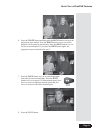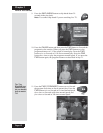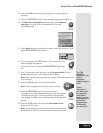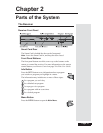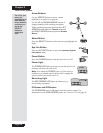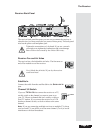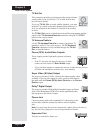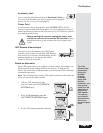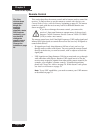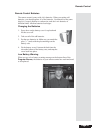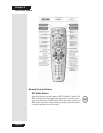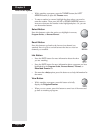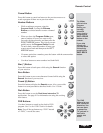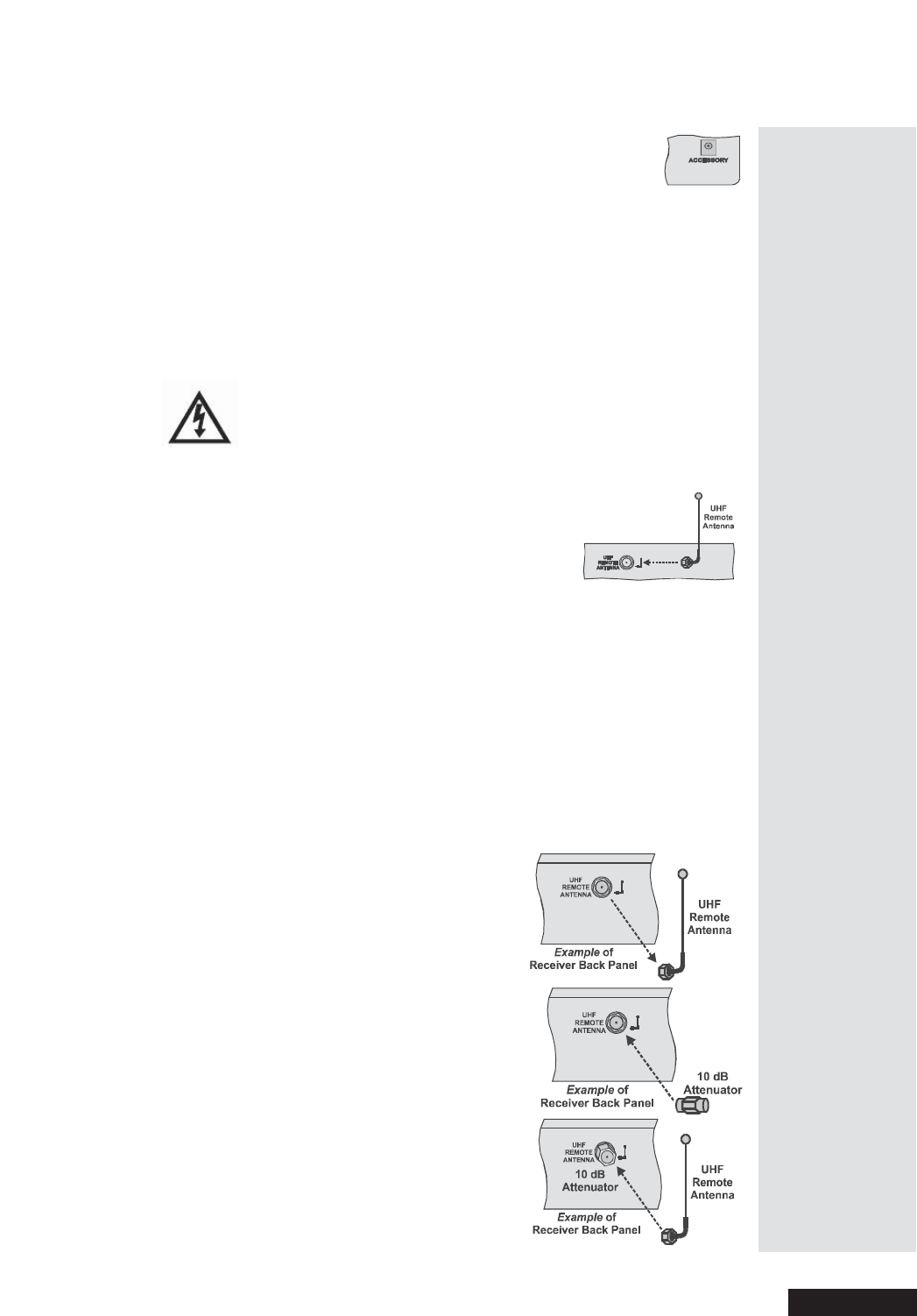
Page 19
The Receiver
Page 19
Accessory Jack
Ifyouconnectamulti-dishswitchtotheACCESSORY JACK,or
if you use an IR extender, you must set up the re ceiver properly.
See Set Up the Accessory Jack on page 81.
Power Cord
Even when the receiver front panel’s green POWER LED is off, the
receiver keeps working a nd it needs power. So, don’t unplug the receive r’s
power cord unless you need to move the receiver or if it will not be used for
an extended period of time.
Before m oving the rec eiver, unplug the power cord
and le t the receiver sit for at le ast 30 se conds! Always
handle the r eceiver gently to protect the delicate parts it has
inside.
UHF Remote Antenna Input
The receiver uses the antenna to get UHF signals
from the remote c ontrol. Connec t the UHF antenna
here, and set it so it doesn’t touch anything. Set the
antenna stra ight up so you can use the remote
control as far away as possible.
Attach an At tenuator
Stray UHF signals (from your neighbor’s remote control, for exa mple) can
block signals from the r emote control to the receiver. To help prevent
blocks, you can install a 10 dB attenuator (you ca n buy one from a consumer
electronics parts store).
Note: This will help keep out stray UHF signals, but a lso c ut down how far
away you can use the remote c ontrol.
1. Take the UHF antenna off of the
receiver’s back panel UHF REMOTE
ANTENNA input.
2.
Put a 10 dB attenuator onto the
UHF REMOTE ANTENNA input.
3. Put the UHF antenna onto the attenuator.
Tip: If the
receiver does
unexp ected
things (for
examp le ,
chang es
chann els,
starts DVR
features
randomly), you
may have to
install a 10 dB
attenuator to
block s tray
UHF sign als .
You can buy
one of these
attenuators at
almost any
electronic parts
store.



